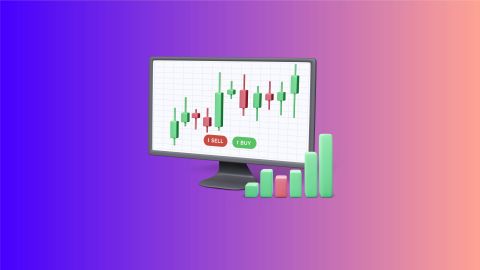Accumulated Depreciation Formula
When you buy an asset—say machinery or a vehicle—you know it will lose value over time. That gradual reduction in its recorded cost is depreciation. Now, when you want to measure the total depreciation charged till date, you use accumulated depreciation. The formula is simple:
Accumulated Depreciation = (Asset Cost – Salvage Value) ÷ Useful Life × Number of Years Used
Think of it as adding up yearly wear and tear until now. For example, if you purchased equipment worth Rs. 10 lakh, expected to last 10 years with Rs. 1 lakh salvage value, annual depreciation is Rs. 90,000. After five years, accumulated depreciation would be Rs. 4.5 lakh, reflecting the cumulative reduction in value.
Different methods to calculate accumulated depreciation
According to the generally accepted accounting principles (GAAP), there are at least five methods to calculate depreciation. The company can select the method that works for them according to the asset in question, these methods are:
- Straight line method
- Declining balance method
- Double-declining balance method
- Sum of years digits method
- Units of production method
Let us go over these one at a time and understand each method in detail
Straight-line method
The straight-line method is the most commonly used method to calculate accumulated depreciation in accounting. The formula for this is-
Periodic accumulated depreciation= (Asset cost -Expected residual value) / (Approx. functional years of life)
In this method, to calculate yearly accumulated depreciation, we take the initial cost of the asset at which it was purchased and subtract its approximate salvage value when the useful time period ends and divide the number by the expected years of use.
Let us understand this with an example. Imagine a company A buys a machine worth Rs. 10,00,000. They estimate that its salvage value after 10 years of use will be Rs. 5,00,000. Putting the values in the formula above, we get the annual accumulated depreciation to be Rs. 50,000. Thus, it can be concluded that the machine would depreciate annually by Rs. 50,000.
Declining balance method
In the declining base method to calculate accumulated depreciation, a company fixes a percentage of depreciation from the present book value of the asset and the same is utilised every year, as the book value gradually decreases. As might be evident, in this method the accumulated depreciation goes up every year, while the amount of accumulated depreciation decreases over time. This method implies that the company charges a bigger chunk of the depreciation expenses in the initial phase of acquiring and using an asset. Here is the formula-
Total annual depreciation = Present book value × Depreciation rate
Let us understand this with an example and real numbers. Imagine company B has acquired an asset worth Rs. 1,00,000. It is estimated that it will have no residual value by the end of its useful lifespan and the company has decided to depreciate 10% of the then present book value of the asset each year. Here is what the depreciation would look like-
Year 1 = Rs. 1,00,000 x 10% = Rs. 10,000
Year 2 = (Rs. 1,00.000 - Rs. 10,000) x 10% = Rs. 9,000
Year 3 = (Rs. 90,000 - Rs. 9,000) x 10% = Rs. 8,100
And this continues until the salvage value hits or the useful life ends.
Double-declining balance method
Under this, the company first calculates depreciation with the straight-line method. Post that, the depreciation rate obtained is doubled and used. It is then maintained the same for all forthcoming years as the asset depreciates until it reaches the residual value.
The formulas used are -
Rate for double – Declining balance (R1) = (100% ÷ Useful lifespan in years) ×2
Double – Declining balance method = Base depreciable cost × R1
Let us understand with an example. Imagine you bought a machine for Rs. 1,00,000. The estimated useful life for this is 10 years with no residual value. Now, the straight-line depreciation rate for this would be 10% and thus, under this method, the depreciation rate would be 20%. Now let us see the depreciation over the years-
Year 1 = Rs. 1,00,000 x 20% = Rs. 20,000
Year 2 = (Rs. 1,00.000 - Rs. 20,000) x 20% = Rs. 16,000
Year 3 = (Rs. 80,000 - Rs. 16,000) x 20% = Rs. 12,800
And this continues until the salvage value hits or the useful life ends.
Sum-of-the-years' digits method
This method can be utilised when a company wants to expense more depreciation in the initial life of the asset. First, let us look at the formula and then understand it with an example-
Periodic accumulated depreciation = Depreciable cost × {(Inverse year digit) / (Sum of year numbers)}
The year in the formula refers to the number of useful years. Let us assume that company E bought a machine for Rs. 10,000 with a useful life of 3 years. As the useful life is 3 years, the sum of the digits is 6 (3+2+1). The depreciation rate will correspond to the inverse year, i.e., Year 1=3, Year 2=2, Year 3=1. Over the years, the depreciation would be-
Year 1 = Rs. 10,000 x (3/6) = Rs. 5,000
Year 2 = Rs. 10.000 x (2/6) = Rs. 3,333.33
Year 3 = Rs. 10,000 x (1/6) = Rs. 1,666.66
Units of production method
In this method, the company approximates an asset’s total use in terms of output units. Then the number of units consumed in a year can be used to determine variable accumulated depreciation each year. The best way to understand this is to take an example of a company car as an asset. The company can estimate the total distance it is expected to drive in its useful time period and then calculate the accumulated depreciation with how much it actually drives each year. Its formula is-
Yearly accumulated depreciation = Depreciation base × {(Units consumed) / (Total estimated consumption units)}
Summing up
Understanding accumulated depreciation and its calculation methods is essential for efficient asset management and accurate financial reporting. We have discussed what is accumulated depreciation and with practical examples understood different depreciation calculation methods, ranging from the most common straight-line method to more complex approaches such as double-declining balance and sum-of-the-years' digits methods. By following these methodologies and principles, businesses can make more informed choices and maximise tax advantages.





